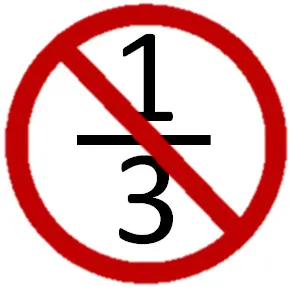
Is a 1/3 Stress Increase Allowed Anymore?
2012 IBC Section 1605.3 sets forth two alternative sets of ASD load combinations. The basic ASD load combinations are the same as those in ASCE 7-10, whereas the alternative basic ASD load combinations are adapted from the 1997 UBC. The two sets of ASD load combinations of the 2012 IBC are based on different philosophies and are not specifically intended to be equivalent to each other. The basic set of ASD load combinations adopted from ASCE 7 is based on the premise that the design strength resulting from the allowable stress method should, in general, not be less than that resulting from the basic strength design method. The alternative basic set of ASD load combinations is based on the premise that the designs should be about the same as those resulting from the 1994 UBC. In the 1997 UBC, the strength-level earthquake effect, E, was brought down to service level through division by a factor of 1.4 before it was combined with the effects of unfactored gravity and other loads in the basic as well as the alternative basic load combinations. The same approach has been carried through to the IBC as well as in ASCE 7. The quantity (1/1.4) has been rounded to 0.7.
For the basic ASD load combinations, Section 1605.3.1.1 states “Increases in allowable stresses specified in the appropriate material chapter or the referenced standards shall not be used with the load combinations of Section 1605.3.1, except that increases shall be permitted in accordance with Chapter 23.” And for alternative basic ASD load combinations, Section 1605.3.2 states “When using these alternative basic load combinations that include wind or seismic loads, allowable stresses are permitted to be increased or load combinations reduced where permitted by the material chapter of this code or the referenced standards.”
What’s interesting to note is that even though the verbiage is quite different when addressing allowable stress increases for basic ASD and alternative basic ASD, the end result is the same. As illustrated in the following Q:A:, the only increase allowed by both ASD load combinations is whatever is permitted by the NDS.
Q: Which material standards allow you to use an allowable stress increase when using the alternative basic load combinations of Section 1605.3.2?
A: Here is a table explaining if and how the material standards address an allowable stress increase for use with the alternative basic load combinations:
| Material | Referenced Standard in 2012 IBC | Section Which Allows Allowable Stress Increase |
| Concrete | ACI 318-11 | Not applicable; ACI 318, starting with its 2002 edition, does not recognize allowable stress design. |
| Masonry | ACI 530/ ASCE 5/ TMS 402 (2011) | No one-third increase permitted starting with the 2011 edition of the standard; allowable stresses themselves have been increased. |
| Steel | AISC 360-10 and AISC 341-10 | No one-third increase is permitted since it was removed in Supplement No. 1, dated December 17, 2001, to the AISC ASD Specifications dated 1989. No one-third stress increase appeared in AISC 360-05, which combined the 1989 ASD and the 1999 LRFD Specifications. It continues that way in AISC 360-10. |
| Wood | AF&PA NDS (2012) | Adjustment factors are permitted in accordance with 2012 NDS Section 2.3. |